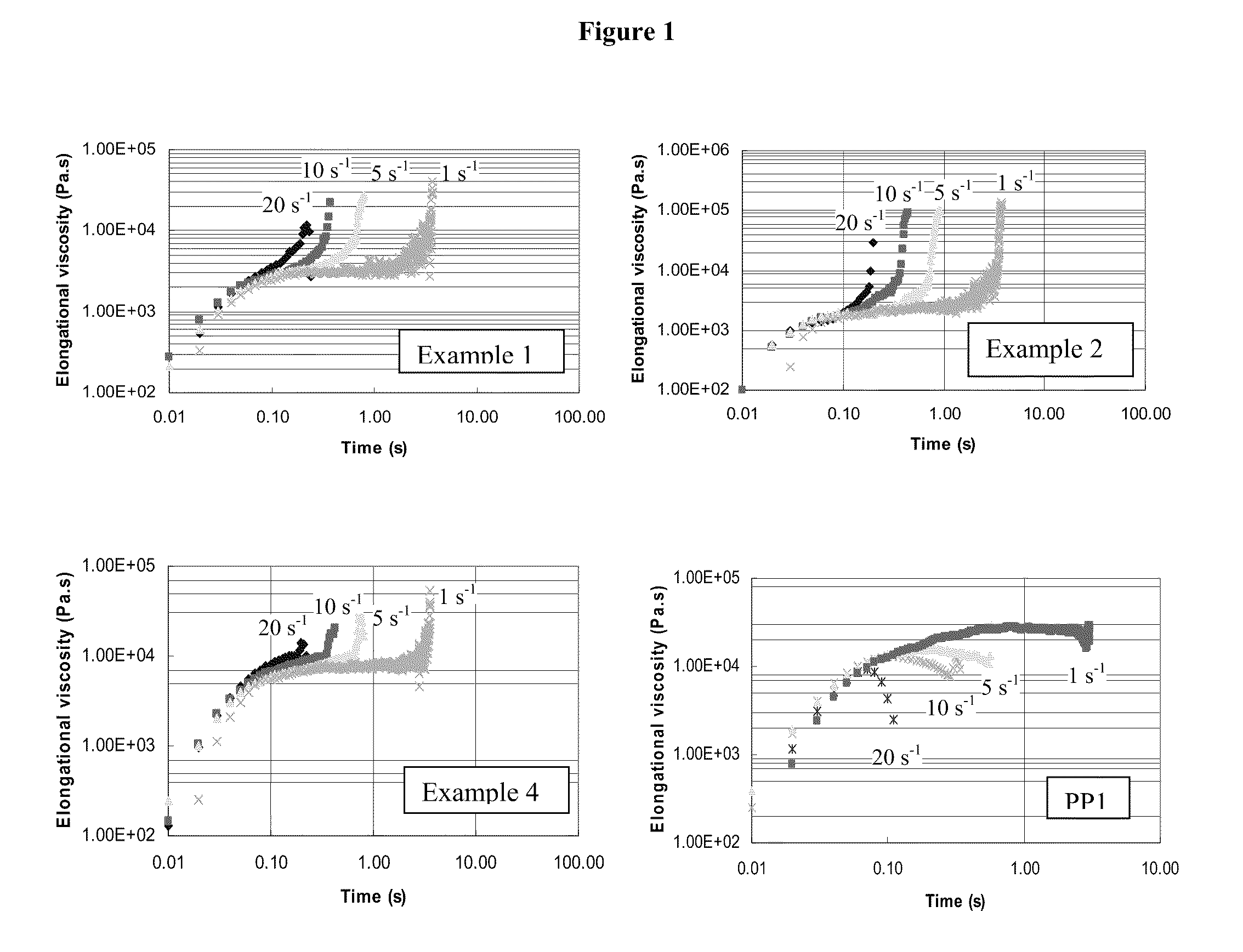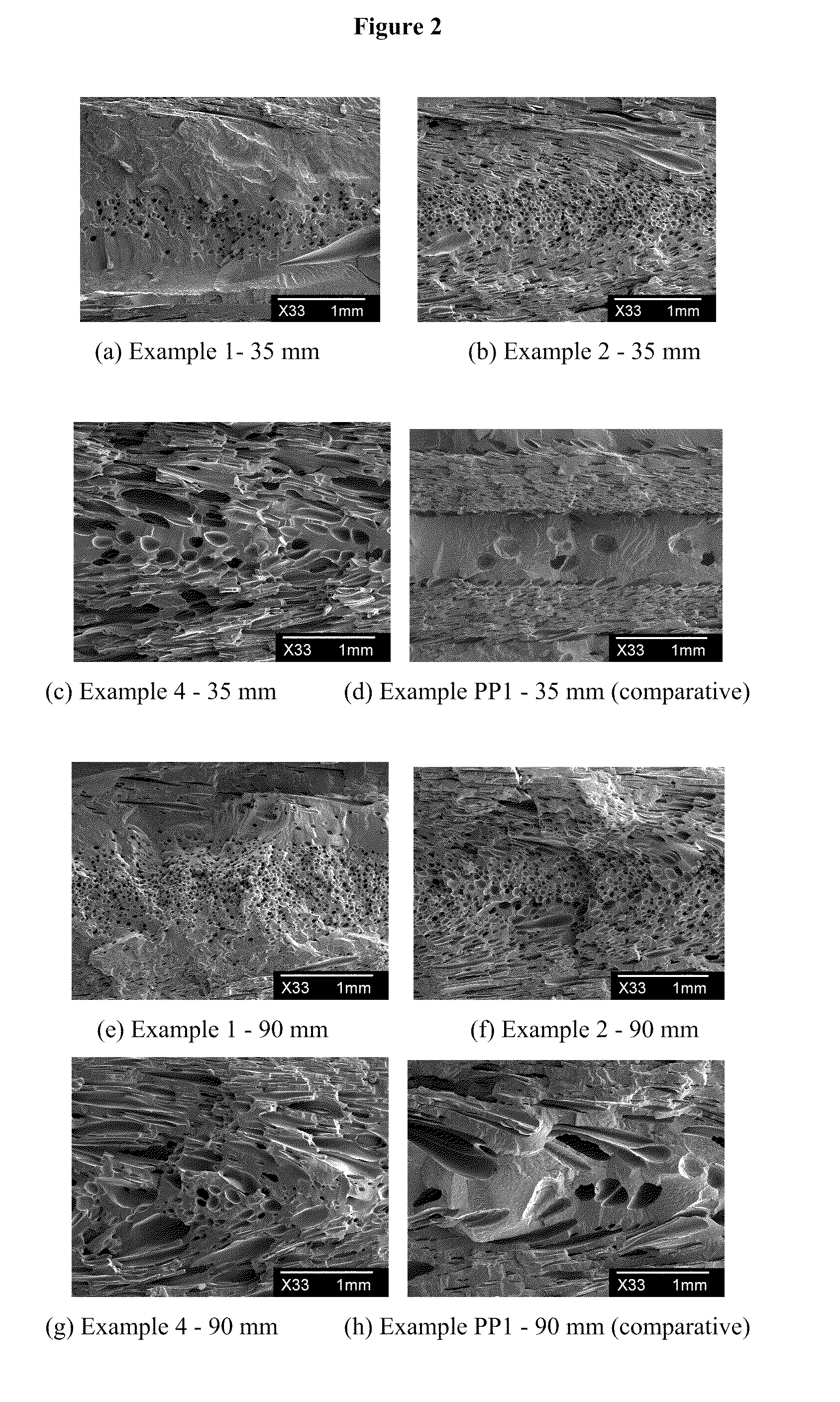Foamable Thermoplastic Reactor Blends and Foam Article Therefrom
a thermoplastic reactor and blend technology, applied in the field of foam articles, can solve the problems of large cells and foam collapse, deficits in melt strength and extensional rheological properties, and limit the application of foam to large cells,
- Summary
- Abstract
- Description
- Claims
- Application Information
AI Technical Summary
Benefits of technology
Problems solved by technology
Method used
Image
Examples
examples 1 to 3
[0177]These examples demonstrate the use of series reactors operated in the continuous stirred-tank solution process to produce polypropylene in the first reactor and propylene / hexene copolymer in the second reactor for example 1, to produce polypropylene in the first reactor and propylene / ethylene copolymer in the second reactor for example 2 and 4, and to produce propylene / ethylene / 1,9 decadiene copolymer in the first reactor and propylene / ethylene copolymer in the second reactor for example 3. The first reactor was 0.5-liter and the second reactor was 1-liter; both of them were stainless steel autoclave reactors and were equipped with a stirrer, a water-cooling / steam-heating element with a temperature controller, and a pressure controller. Solvents, monomers such as ethylene and propylene were first purified by passing through a three-column purification system. Purification columns were regenerated periodically whenever there was evidence of lower activity of polymerization.
[017...
PUM
| Property | Measurement | Unit |
|---|---|---|
| Temperature | aaaaa | aaaaa |
| Temperature | aaaaa | aaaaa |
| Temperature | aaaaa | aaaaa |
Abstract
Description
Claims
Application Information
 Login to View More
Login to View More - R&D
- Intellectual Property
- Life Sciences
- Materials
- Tech Scout
- Unparalleled Data Quality
- Higher Quality Content
- 60% Fewer Hallucinations
Browse by: Latest US Patents, China's latest patents, Technical Efficacy Thesaurus, Application Domain, Technology Topic, Popular Technical Reports.
© 2025 PatSnap. All rights reserved.Legal|Privacy policy|Modern Slavery Act Transparency Statement|Sitemap|About US| Contact US: help@patsnap.com


